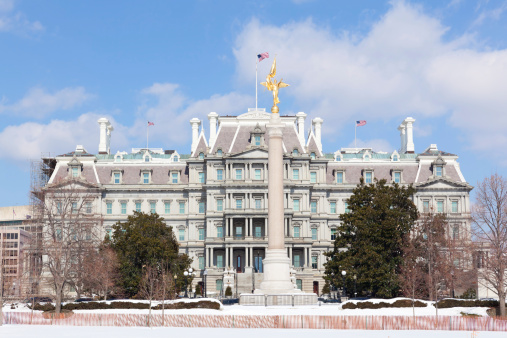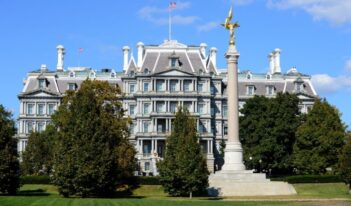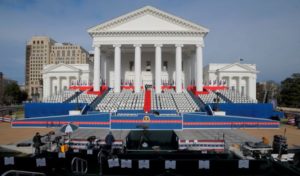
Agencies can improve both regulatory analysis and decision-making by establishing internal review capacity.
Before an agency completes a cost-benefit analysis (CBA) subject to oversight by the White House Office of Information and Regulatory Affairs (OIRA), or by the courts if an agency decision is litigated, what forms of internal review of that analysis should the agency undertake on its own?
One increasingly common practice is for agencies to establish a centralized review office or officer charged with examining the internal cost-benefit figures developed by the agency’s rule-writing staff. Examples of such offices include the Environmental Protection Agency’s (EPA) Office of Policy or the Bureau of Economic Analysis within the Federal Trade Commission (FTC). These internal agency CBA reviewers are often trained economists who work closely with agency policymaking officials to evaluate internal CBAs before they ever face external review.
Such forms of pre-judicial and even pre-presidential review can help agencies insulate themselves from potential reversal. These mechanisms are gaining increasing significance amidst growing calls for independent regulatory agencies like the Securities and Exchange Commission (SEC) to conduct cost-benefit analysis and to institutionalize more rigorous regulatory analysis practices.
Executive orders currently require executive branch agencies, for their part, to submit “significant” regulatory actions to a further stage of external review by OIRA. Once an agency submits a draft regulatory action to OIRA, OIRA then coordinates a review process with other agencies and White House offices to help ensure, among other things, the regulatory action’s consistency with presidential priorities, as well as to prevent interagency conflicts and generally to promote the careful consideration of regulatory costs and benefits.
Agencies have various incentives to avoid reversal by both OIRA and the courts. When an agency fears that the probability of reversal by an external reviewer is high, it can choose among various strategies to reduce it — sometimes by trying to avoid external review altogether.
For example, agencies might favor various policymaking forms, whether adjudication or guidance documents, which, as a class, are more likely to bypass presidential or judicial review altogether. In addition, agencies can attempt to avoid a determination that a rule or guidance document is “significant” and calibrate the level of scrutiny by splitting a rule into smaller parts or understating or refusing to quantify costs. Agencies can also effectively truncate the amount of time available for review by submitting regulatory actions to OIRA close to statutory or judicial deadlines, or they can build coalitions with other executive branch entities to help resist or change presidential preferences.
It remains to be seen whether similar incentives will exist for independent regulatory agencies because of proposed legislation that would require them to consult with OIRA. In light of concerns that such requirements could unduly extend the influence of the President, however, it is worth remembering yet another self-insulation mechanism in the agency’s toolkit: the establishment of internal cost-benefit review. The creation or empowerment of agency offices that can credibly develop CBA expertise can help to insulate regulatory action against potential external challenges to a rule’s costs and benefits.
Institutional design choices for such offices might include, for example, their hierarchical location, their centralization within the agency, as well as the education and training of those working within them. Because administrative agencies are hierarchical bodies, the more an office is integrated as part of the agency’s top-level decision-making apparatus, the more likely CBA considerations will affect the final regulatory policy. A centralized office can also result in better economies of scale, expertise, and recruitment opportunities. Finally, the professional qualifications of the officers can further bolster their internal influence.
Last April, for example, the Financial Industry Regulatory Authority (FINRA) hired its first chief economist to shape a more formal internal cost-benefit review process. Similarly, after the D.C. Circuit struck down the SEC’s shareholder proxy rule in 2011, the SEC bolstered the number of economists in its Division of Risk, Strategy, and Financial Innovation. In addition, the agency has also suggested that it might consider granting the SEC Chief Economist or other economists sign-off authority on the agency’s cost-benefit analyses of its rules, essentially ensuring an internal review process. These internal agency actors possess the expertise and training to help increase the credibility of an agency’s own evaluations of regulatory consequences.
As debates proceed over the relative wisdom of subjecting financial regulation to cost-benefit analysis, governmental decision-makers would be well-served to consider questions of internal institutional design. Internal agency reviewers are not only more likely to be well-informed about the substantive policy questions at hand, but they can also work more closely with agency decision-makers to incorporate cost-benefit principles into the decision-making process itself, rather than leaving them as afterthoughts for second-guessing by external reviewers.




